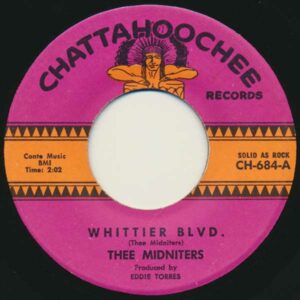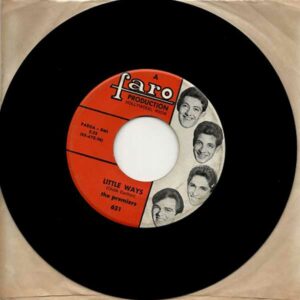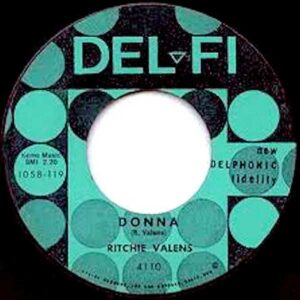Producers, Promoters & Innovators

Record Producers, Promoters and Innovators were major players in the development of the “Eastside Sound”. The Boyle Heights District, just East of Los Angeles, and the surrounding area was bustling with young musicians, eager to start or join a band. There were hundreds of available venues, where the music fans could go and listen and dance to the new style of music. There were plenty of television shows and radio stations, who played all the latest hits and showcased the new dances. And there were dozens of Record Stores and music outlets, where the kids could purchase or listen to the latest hits.
The eastside community was experiencing a “cultural clash”, as the Spanish-speaking people were in an English-speaking environment. This social phenomenon started much earlier in the Los Angeles area. From the foundation of this fabled city, under Mexican governorship; to the statehood of California; to the greatest generation during the 1930’s and 40’s; to the first American-Mexican English-speaking generation.
Things were different then, and the norm had to change. During this same time, new styles of music emerged, and the new generation liked it. Rock & Roll and Rhythm & Blues were here to stay. Some music teachers started to develop Music Departments in the high schools. Organizers and Promoters started producing dances and concerts to showcase the bands. More importantly, the promoters and managers started approaching the independent record producers like Del-Fi, Rampart, and Chattahoochee Records. It was on!
This is dedicated to a few of those “Record Producers, Promoters and Innovators”, who helped propel the legendary “Eastside Sound” of the 1960’s on the eastside of Los Angeles, California.
Record Producers
The independent record producers do just that, they produce records. They have the contacts, the expertise, and the money to do all the necessary things in the production and duplication of recorded music. There are contracts to be filled in and signed; music titles and clearances must be obtained; registrations and publishing rules must be strictly adhered to; and they must pay for all of that first. The costly studio recording sessions and the final sound mixing must be done and then you can prepare the master’s for replication. The independent record producers must have a record pressing plant and printing company complete the process and mass produce and package the records or tapes. That is yet another out-of-pocket cost. Now, with product in-hand, you are ready to distribute the records to retail and wholesale outlets. By this time, there is zero return on your money and a lot is hanging on in the hope that people will purchase the product. A hit or miss? It seems like a hard career path.
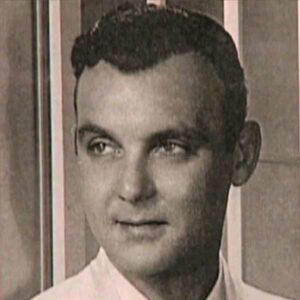
Edward Louis “Eddie” Davis was an American singer, record producer and record label owner who was active in the 1950s and 1960s. He is an important part of the Los Angeles music scene for that period, especially in the history of Chicano rock music.
He was born in 1926 in Boyle Heights, California. After graduation from Fairfax High School, he joined the navy and saw action during the Second World War. Before Davis tried his hand at being a recording artist, he went into the restaurant business and opened seven restaurants throughout his lifetime.
After trying his hand as a singer, he later went into record production and founded Faro Records in 1958. Later, he founded Rampart and five more affiliate labels. Eddie was first introduced to the Chicano music scene around 1962, when he met Billy Cardenas. They recorded and produced the national hit, “Farmer John” by The Premiers. A few years later, Eddie Davis recorded and produced another national hit record, “Land of 1000 Dances” by Cannibal and the Headhunters. He also produced long-playing record albums by the same names.
Eddie Davis also recorded and produced records for The Blendells, The Jaguars, Thee Enchantments, The Atlantics, The Sa Shays, God’s Children, The Romancers, El Chicano, The Mixtures and many more. He continued to produce and record music into the 1990’s with The Eastside Connection.
Eddie Davis was a gentle and quiet man. He gave so much to the Chicano music scene and helped to develop the “Eastside Sound”.
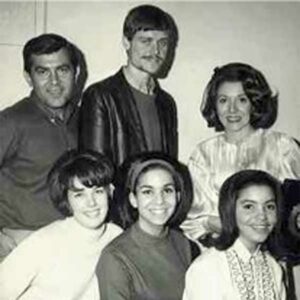
Ruth Conte Yardum founded Chattahoochee Records label in 1961. They operated in the greater Los Angeles area. An early success was a recording by The Murmaids, titled “Popcicles and Icicles”. In 1964, Chattahoochee would record and produce the long-playing record album titled, “On Whittier Blvd” by Thee Midniters.
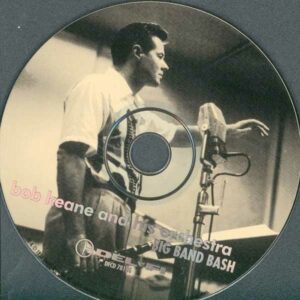
Bob Keane was born Robert Kuhn. At a young age he learned to play the clarinet and decided to pursue a music career. After service during WWII, he played with such top swing names as Artie Shaw and Woody Herman. After changing his name in the late 1950’s, he hosted his own TV show on KNXT in Los Angeles, CA.
In 1958, Keane established Del-Fi Records and recorded a Pacoima teen named Richard Valenzuela, whom he rechristened Ritchie Valens. Del-Fi recorded into the ’60s, scoring minor hits by rocker Chan Romero (“Hippy Hippy Shake”), Little Caesar and the Romans, Dick Dale and the Del-Tones, and Johnny Crawford. During the early 1960’s Del-Fi recorded several groups and recording artists from the Northeast Los Angeles area. The Romancers, Maximillian Uballez, The Sisters, Ronnie and the Pomona Casuals, and Lil Ray recorded on Del-Fi or a subsidiary label, like Donna, Mustang, and Selma labels. Keane folded Del-Fi in 1967.
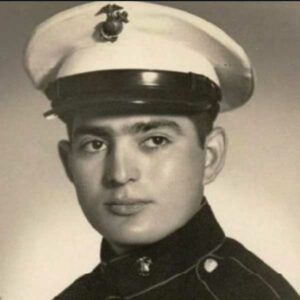
Eduardo “Eddie” Torres was born in Brownsville, Texas and settled in the East Los Angeles area after serving in the USMC. He did social work with the local youth. He was a counselor at St. Alphonsus Church. He helped the various social clubs to coordinate fundraisers, like the legendary dances at the church’s hall.
Eddie was the manager of Thee Midniters, a popular local and regional recording band. He produced and promoted events, large and small, throughout the Southwest USA. He owned TorMid and Whittier Records labels and produced several records. Eddie also produced The Huggy Boy TV Show on a local station.
Eddie Torres was a legendary producer and patriot. Semper Fidelis!
Record Labels
Band Managers, Promoters and Producers
The band managers; the music and event producers/promoters; and the community leaders were another positive reason for the Chicano Music bang during the early 1960s and continued through the decade. The band managers, promoters and producers all had their individual and often a combined set of responsibilities in the execution of their given duties. The band managers would move the band forward with new songs, rehearsals, event dates and locations, and all the logistical information that would be needed for the “gigs” The promoters would rent the hall, contract the musical acts, and provided the necessities to make the event successful. The Promoters make contacts with record stores, radio station DJs, and record producers in their effort for the best production possible. The community leaders and positive role models were also there to help and give a hand to the young teenagers. The counselors, teachers, and school administrators were quick to see the value in teaching music and using music to bring people together. Some schools developed music departments and school bands for the students, who exhibited a deep interest. The community counselors and leaders would organize dances and fund raisers for the community social clubs. There was peace and music throughout Aztlan.
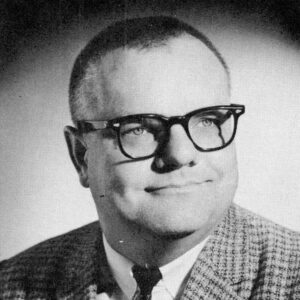
Bishop Mora Salesian is a parochial boy’s high school in the Boyle Heights district, just East of Downtown Los Angeles, CA. The school was built in 1958, with the first graduating class in 1964. The school’s Music Director, William A. Taggart was very instrumental in teaching and developing the student’s musical talents. He developed a good music department in the high school and he started to produce concerts at East Los Angeles College auditorium in the nearby City of Monterey Park. Five record albums were produced, documenting the concerts on April 19, 1964; October 18, 1964; May 16, 1965; and October 10, 1965, at the auditorium of East Los Angeles City College (ELACC) and one more in 1965. Every band that performed at these shows had to audition for William “Prof” Taggert, at the Salesian High School music room.
The students, on campus, appreciatively referred to him as Professor or “Prof”. He is accredited by many of the early eastside sound musicians for giving them training, encouragement, and a start into a music career. We thank you, Bill Taggart.

Billy was born in 1938 in Boyle Heights, California. After high school, Billy entered the US Army. After discharge, he began working in the recording industry. Billy Cardenas managed and promoted many of the East L.A. bands from the early 1960’s. He would start management and promoting The Romancers and The Heartbreakers.
In 1963, Eddie Davis invited the Romancers to perform at his Rainbow Gardens in Pomona. The Romancers were an instant hit. Billy & Eddie connected, and the West Coast Eastside Sound was about to reach larger audiences.
Billy credits disc jockeys Huggy Boy & Godfrey Kerr for helping him promote his dances & getting his groups records onto the radio. Eddie Torres, best known as the manager of the East L.A. group, Thee Midniters helped Billy with bookings and promotions.
Billy Cardenas and Eddie Davis together accomplished a lot and they both had successful careers. They brought artists who would otherwise never get a chance to reach a national audience.
Historic Documentaries & Interviews
The Eddie Davis West Coast Eastside Sound Story
Eddie Davis was a child actor and successful restaurateur and is quoted as saying, “If anybody thinks I got rich over my East Los Angeles music, they’re wrong. I cooked a lot of hamburgers to make those records.” Rampart Records contributed to what is known as the West Coast East Side Sound and included such bands as Cannibal and the Headhunters, which opened for the Beatles at Shea Stadium in 1965. Multicultural bands such as the Mixtures and the Blendells were given recording opportunities by Rampart Records.
Hector Gonzalez’s documentary about Rampart Records is part of this collection. Director Jimmy A. Velarde has this to say about the documentary’s story: “The West Coast East Side Sound Story immortalizes the 1960’s East Los Angeles Chicano rock legends that have contributed to the popular American cultural experience. This documentary salutes Eddie Davis and the many groups on his various record labels and their contribution to American pop music that has been immeasurable. Yet, it has not been recognized for its historic value and cultural importance.”
The Eddie Torres Story
Eddie Torres tells his story to video director and producer, Tony Reyes from Jammin’ Classics. Eddie was a concert promoter and the manager of “Thee Midniters”. He was also a record producer and owned two record labels. He put together many concerts with top recording artists. Check out this interesting video about Eddie Torres.
